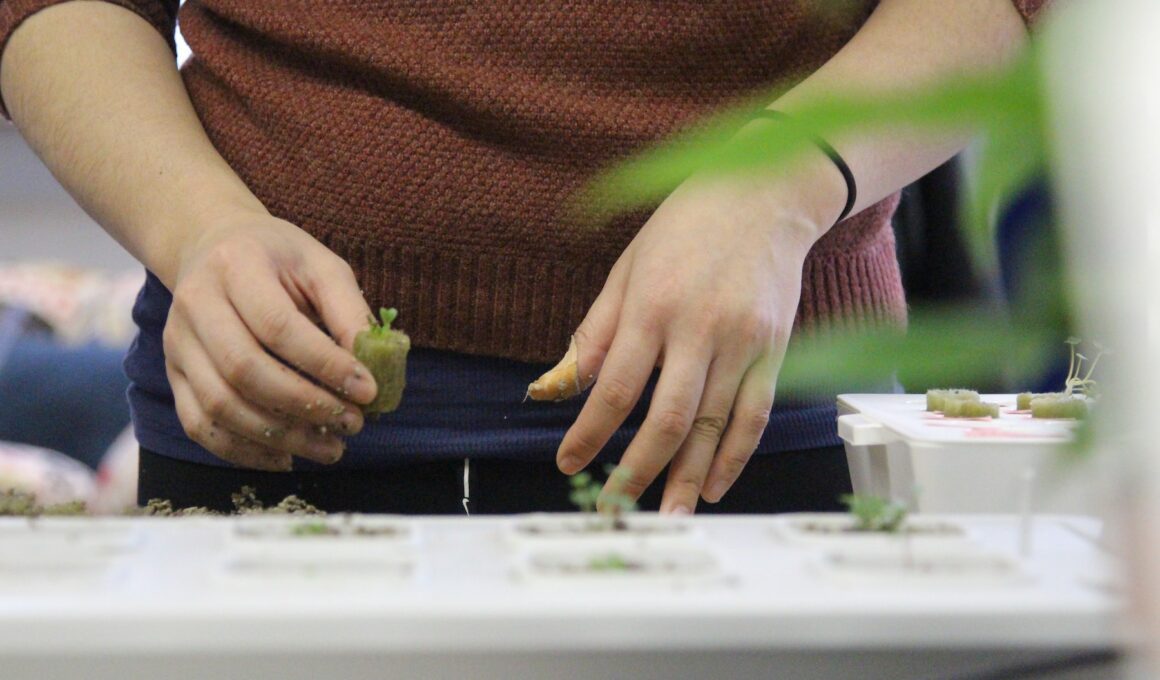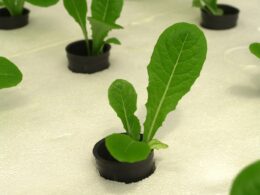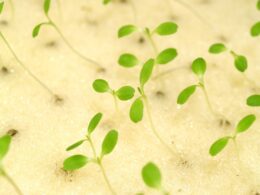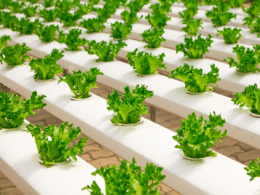Are you considering starting a hydroponic garden but wondering if you need sunlight to make it work? The answer is no, you don’t need sunlight for hydroponics.
Hydroponic plants can thrive under alternative light sources, allowing you to grow your favorite vegetables and herbs indoors or in areas with limited sunlight. Understanding the role of light in plant growth is crucial for successful hydroponic gardening.
In this article, we’ll explore the different light sources available for hydroponic plants, factors to consider when choosing the right light source, and best practices for optimizing light in your hydroponic system. With this knowledge, you’ll be able to create a safe and productive indoor garden that provides you with fresh, healthy produce all year round.
Understanding the Role of Light in Plant Growth
As you delve into the world of plant growth, you’ll quickly discover that light plays a crucial role in nurturing your leafy green friends.
Light spectrum refers to the different types of light waves that plants absorb. Plants primarily use red and blue light to grow, which is why many hydroponic systems come with specialized LED grow lights that mimic sunlight.
Photoperiod is another important factor to consider when growing plants hydroponically. This refers to the amount of time a plant is exposed to light during a 24-hour period. Different plants require different amounts of light, so it’s important to research the specific needs of the plants you’re growing.
Some plants need up to 18 hours of light a day, while others need only 12.
It’s important to note that while sunlight is the most natural source of light for plants, it’s not necessary for hydroponics. As long as you provide your plants with the proper spectrum and photoperiod of light, they will thrive. So don’t worry if you don’t have access to a sunny window or outdoor space – you can still grow healthy, happy plants with hydroponics.
Alternative Light Sources for Hydroponic Plants
You can light your hydroponic plants with a variety of alternative sources, such as LED grow lights or fluorescent bulbs. LED lighting is a popular choice because it’s more energy-efficient and lasts longer than fluorescent bulbs. Additionally, LED lights emit less heat, which can be beneficial for plant growth.
On the other hand, fluorescent bulbs are a more affordable option and are available in a wider range of colors, which can be useful for different stages of plant growth. When considering natural vs artificial light sources for hydroponic plants, it’s important to note that natural sunlight can be difficult to control and may not provide consistent light throughout the day.
Artificial light sources, such as LED and fluorescent bulbs, can be customized to provide the optimal amount and type of light for your plants. Depending on the type of plant and its growth stage, you may need to adjust the intensity and color of your lighting.
In addition to LED and fluorescent bulbs, there are other alternative light sources that can be used for hydroponic plants, such as high-pressure sodium and metal halide lights. These options are typically used in larger-scale operations and may require additional equipment and expertise.
Ultimately, the choice of lighting will depend on your specific needs and budget. By considering the pros and cons of LED vs fluorescent lighting and natural vs artificial light sources, you can select the right lighting for your hydroponic setup.
Factors to Consider When Choosing Light Sources
When choosing light sources for your hydroponic plants, you need to consider several factors to ensure optimal growth and yield.
Firstly, different plant species have varying light requirements, so it’s essential to choose a light source that can provide the right spectrum and intensity for your crops.
Energy efficiency is also a crucial factor to consider, as it can impact your electricity bills and the overall sustainability of your hydroponic system.
Finally, you should also factor in the cost and maintenance requirements of your light source to ensure that it’s both affordable and easy to maintain over time.
Plant Species and Light Requirements
Know which plants thrive in specific light conditions to optimize your hydroponic setup. Different plant species have varying light requirements that affect their growth and development. Some plants, like lettuce and spinach, prefer lower light intensity and can thrive under artificial lighting. Other plants, like tomatoes and peppers, require higher light intensity to produce fruit.
It’s important to research the light requirements of the plants you want to grow and choose the appropriate lighting system that can provide the necessary light intensity. When choosing the lighting system for your hydroponic setup, consider the specific light requirements of the plants you want to grow. Some plants require full spectrum lighting, while others can thrive under specific colors of light. Additionally, some plants require more hours of light than others.
By understanding the light requirements of your plants, you can choose the most efficient and effective lighting system for your hydroponic setup, which can ultimately lead to healthy plant growth and higher yields.
Energy Efficiency
Saving energy in your hydroponic setup can be achieved by using energy-efficient lighting systems and adjusting the light schedule to match the specific light requirements of your plants. One way to achieve this is by using LED lighting. LED lights use less energy compared to traditional lighting systems, making them an excellent choice for hydroponic setups. They also produce less heat, reducing the need for additional cooling systems, which can save you even more energy.
Another way to save energy in your hydroponic setup is by using solar panels. Solar panels can power your hydroponic setup while reducing your carbon footprint. They are a great investment for those who want to reduce their energy costs in the long term.
By using energy-efficient lighting systems and incorporating solar panels, you can create a more sustainable and cost-effective hydroponic setup. This will benefit both you and the environment.
- LED lights are energy-efficient and produce less heat, making them a great choice for hydroponic setups.
- Solar panels can power your hydroponic setup and reduce your carbon footprint.
- Incorporating energy-efficient lighting systems and solar panels in your setup can create a more sustainable and cost-effective system.
Cost and Maintenance
Maintaining a hydroponic setup can be affordable and hassle-free with proper cost and maintenance strategies. One of the biggest factors in cost is lighting. While natural sunlight is ideal, it’s not always possible or practical, especially in indoor setups.
However, there are budget-friendly options for lighting, such as LED grow lights, that can provide the necessary light spectrum for plant growth while using less energy and lasting longer than traditional lighting options. It’s important to calculate the cost of lighting and choose the most energy-efficient option to save money in the long run.
In addition to lighting, regular maintenance and troubleshooting can help keep costs down. Checking the pH balance of the nutrient solution, monitoring water levels, and cleaning the system regularly can prevent expensive problems from arising.
It’s also important to have a plan in place for troubleshooting maintenance issues, such as identifying and treating plant diseases or pests. By being proactive in maintenance and addressing issues promptly, the overall cost of maintaining a hydroponic setup can be kept at a minimum.
Balancing Light and Nutrient Requirements
Achieving the perfect balance of light and nutrients is crucial for growing healthy and thriving plants in a hydroponic system. When it comes to light, it’s important to consider both light intensity and light duration. Too much light can damage the plants, while too little light can lead to stunted growth and poor yields.
It’s recommended to provide 14-16 hours of light per day for most plants in a hydroponic system, while also ensuring that the light intensity is appropriate for the specific plant species.
In addition to light, it’s equally important to provide the right balance of nutrients to your plants. In a hydroponic system, nutrients are delivered directly to the plant roots through the water. It’s essential to regularly monitor and adjust the nutrient levels to ensure that the plants are receiving the proper amount of nutrients.
Overfeeding or underfeeding the plants can cause nutrient imbalances and lead to plant health issues.
To achieve the perfect balance of light and nutrients, it’s important to regularly monitor and adjust both factors based on the specific needs of your plants. By providing the right amount of light and nutrients, you can ensure that your plants are healthy and thriving in your hydroponic system.
Remember to always research the specific requirements for the plants you’re growing and adjust accordingly for the best results.
Best Practices for Optimizing Light in Hydroponic Systems
Optimizing light in hydroponic systems is crucial for achieving healthy and thriving plants, and implementing best practices can lead to impressive yields. Here are three key considerations to keep in mind when optimizing light in your hydroponic setup:
-
Light spectrum: Different plants have different light requirements, and it’s important to choose the right spectrum of light for your specific crop. For example, plants in the vegetative stage require blue light while those in the flowering stage need more red light. Investing in high-quality LED grow lights that can switch between different spectrums can help you tailor the light to your plant’s needs.
-
Light intensity: While plants need a certain amount of light to grow, too much light can be harmful. It’s important to find the right balance to maximize growth without damaging your crops. One way to do this is by adjusting the height of your grow lights to ensure that they are not too close or too far from your plants. You can also use light meters to measure the intensity of the light and adjust accordingly.
-
Light duration: Just like with natural sunlight, plants need periods of darkness to rest and recover. It’s important to give your plants a break from constant light exposure by setting up a timer to regulate the duration of light in your hydroponic system. Typically, plants require 12-18 hours of light per day, depending on their stage of growth.
By considering these three factors when optimizing light in your hydroponic system, you can ensure that your plants are getting the right kind of light, at the right intensity, for the right amount of time. With a little bit of attention to detail and some high-quality equipment, you can achieve impressive yields and healthy, thriving plants.
Frequently Asked Questions
What is the minimum amount of sunlight required for hydroponic plants to grow?
Hydroponic plants can grow without sunlight, as long as they get the right kind of light. Sunlight and artificial light can both be used to provide the necessary light for hydroponic plants to grow.
The optimal light duration for hydroponic plants is 14-16 hours per day, regardless of whether it is natural or artificial light. It’s important to make sure that the light source is close enough to the plants so that they receive enough light, but not so close that they get burned.
Whether you decide to use sunlight or artificial light, make sure that your plants are getting the right amount and duration of light for the best growth possible.
Can hydroponic plants survive without any natural sunlight?
If you’re interested in growing hydroponic plants but don’t have access to natural sunlight, don’t worry. There are plenty of hydroponic lighting alternatives that can help your plants grow just as well indoors.
LED lights are a popular choice, as they use less energy and emit less heat than traditional lighting. You can also consider fluorescent or high-intensity discharge (HID) lights. Indoor hydroponic systems can be set up with these lights to provide your plants with the necessary light spectrum for photosynthesis.
While natural sunlight may be ideal, it’s not necessary for hydroponic plants to survive and thrive.
How do different types of artificial light sources affect plant growth in hydroponic systems?
To maximize plant growth in hydroponic systems, it’s important to understand how different artificial light sources affect plant growth.
Light spectrum and light intensity are two important factors to consider when choosing the right artificial light source. The light spectrum, or the color of light emitted, can impact the rate of photosynthesis and overall plant growth. Red and blue light are commonly used in hydroponic systems as they are known to promote growth.
Light intensity, or the level of brightness, is also important to consider. Plants require a certain level of brightness to properly photosynthesize and grow. It’s important to monitor and adjust the light intensity to ensure optimal plant growth.
By choosing the right artificial light source and adjusting the light spectrum and intensity, you can ensure that your hydroponic plants thrive.
Is it possible to overexpose hydroponic plants to light, and if so, what are the consequences?
Overexposing hydroponic plants to light can cause plant stress, which can lead to a decrease in overall plant health and yield.
Light intensity is a crucial factor when it comes to hydroponic plant growth, as too much or too little can negatively impact plant development.
When plants are exposed to high levels of light, they can become stressed and experience a range of negative consequences, such as leaf burn, stunted growth, and decreased yield.
To prevent this, it’s important to monitor light levels and adjust accordingly to ensure that plants receive the optimal amount of light for healthy growth.
Remember, maintaining the right balance of light is key for a successful hydroponic system.
How can you adjust the amount and timing of light exposure to maximize the yield of hydroponic plants?
To maximize the yield of your hydroponic plants, it’s crucial to optimize the amount and timing of light exposure. You can achieve this by using a timer and adjusting the duration and intensity of light according to the plant’s growth stage.
During the vegetative phase, provide 16-18 hours of light per day, and during the flowering stage, reduce it to 12-14 hours. It’s also essential to manage the nutrient solution, as light and nutrients work together to promote plant growth.
Keep the solution pH balanced and change it regularly to ensure the plants receive the necessary nutrients. By optimizing light exposure and nutrient solution management, you can ensure healthy plant growth and maximize your hydroponic yield.
Conclusion
So, do you need sunlight for hydroponics? The answer is no, but you do need light. Understanding the role of light in plant growth is crucial for optimizing your hydroponic system.
While sunlight is the most natural and abundant source of light, there are alternative light sources that can be just as effective. When choosing a light source, consider factors such as the type of plant, the size of your system, and your budget.
Remember to balance the light and nutrient requirements of your plants for optimal growth. And don’t forget to regularly monitor and adjust your light source as needed.
By following best practices for optimizing light in your hydroponic system, you can ensure healthy and thriving plants year-round. So, whether you choose sunlight or an alternative light source, remember that light is an essential component of hydroponic plant growth.









